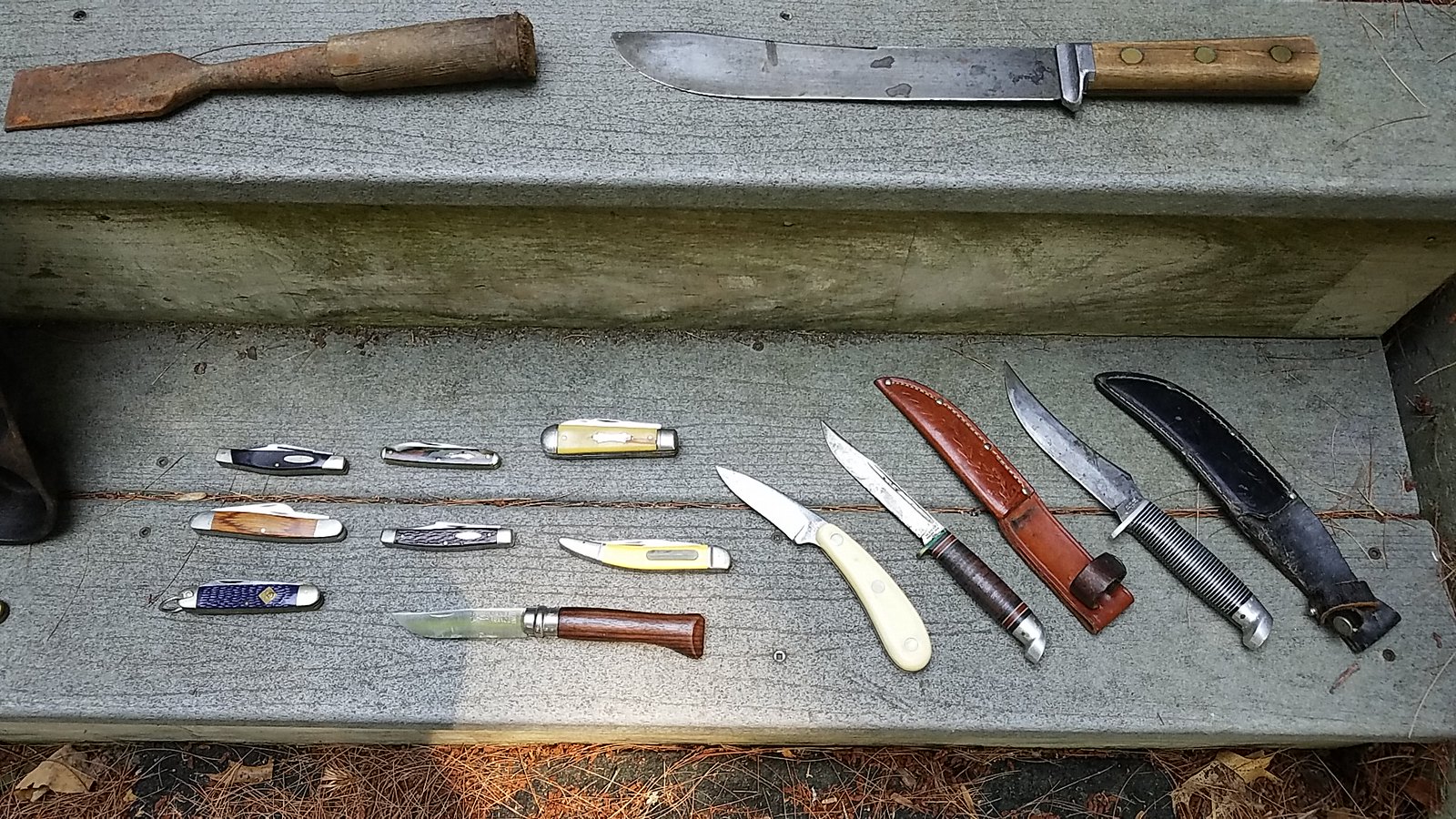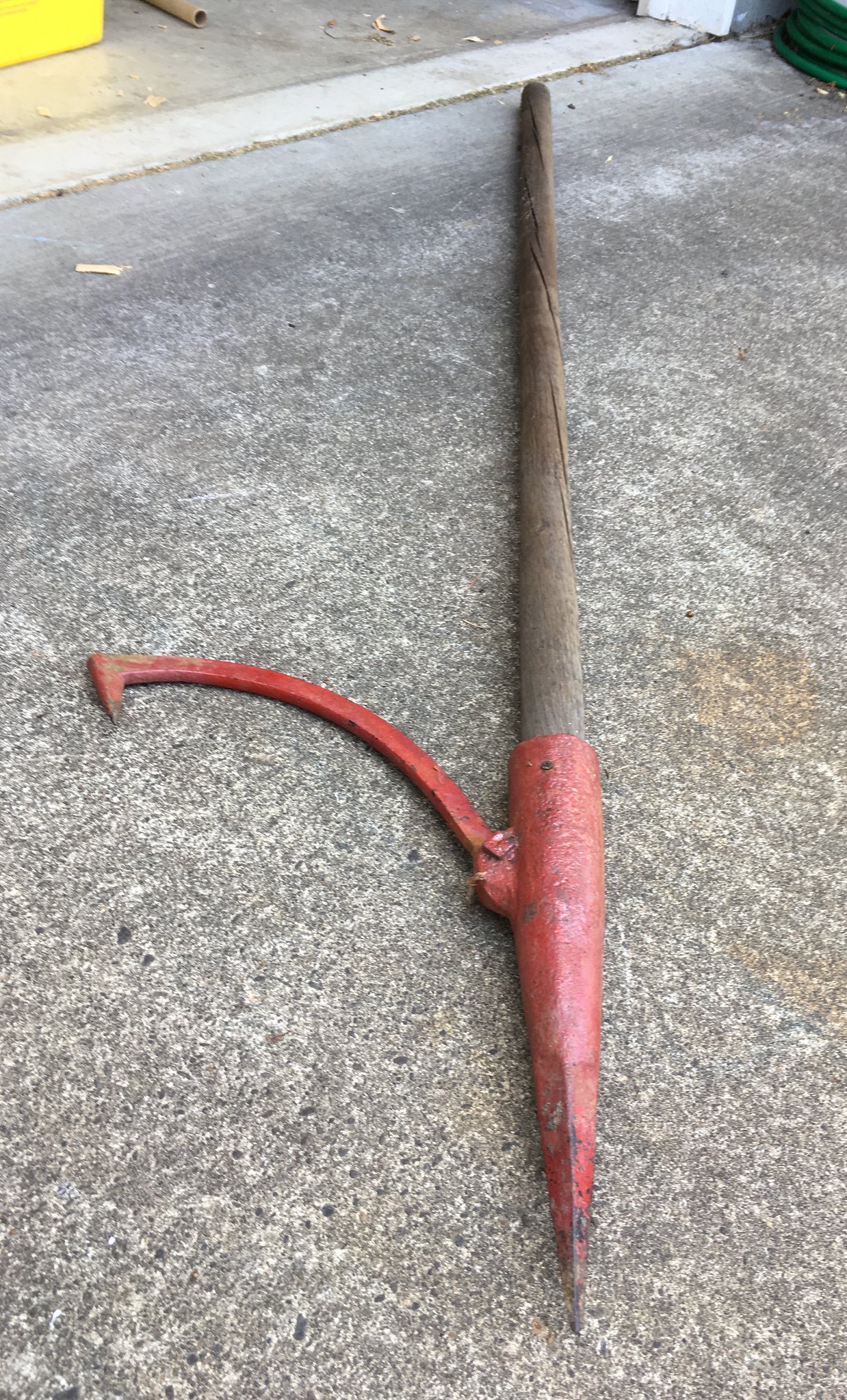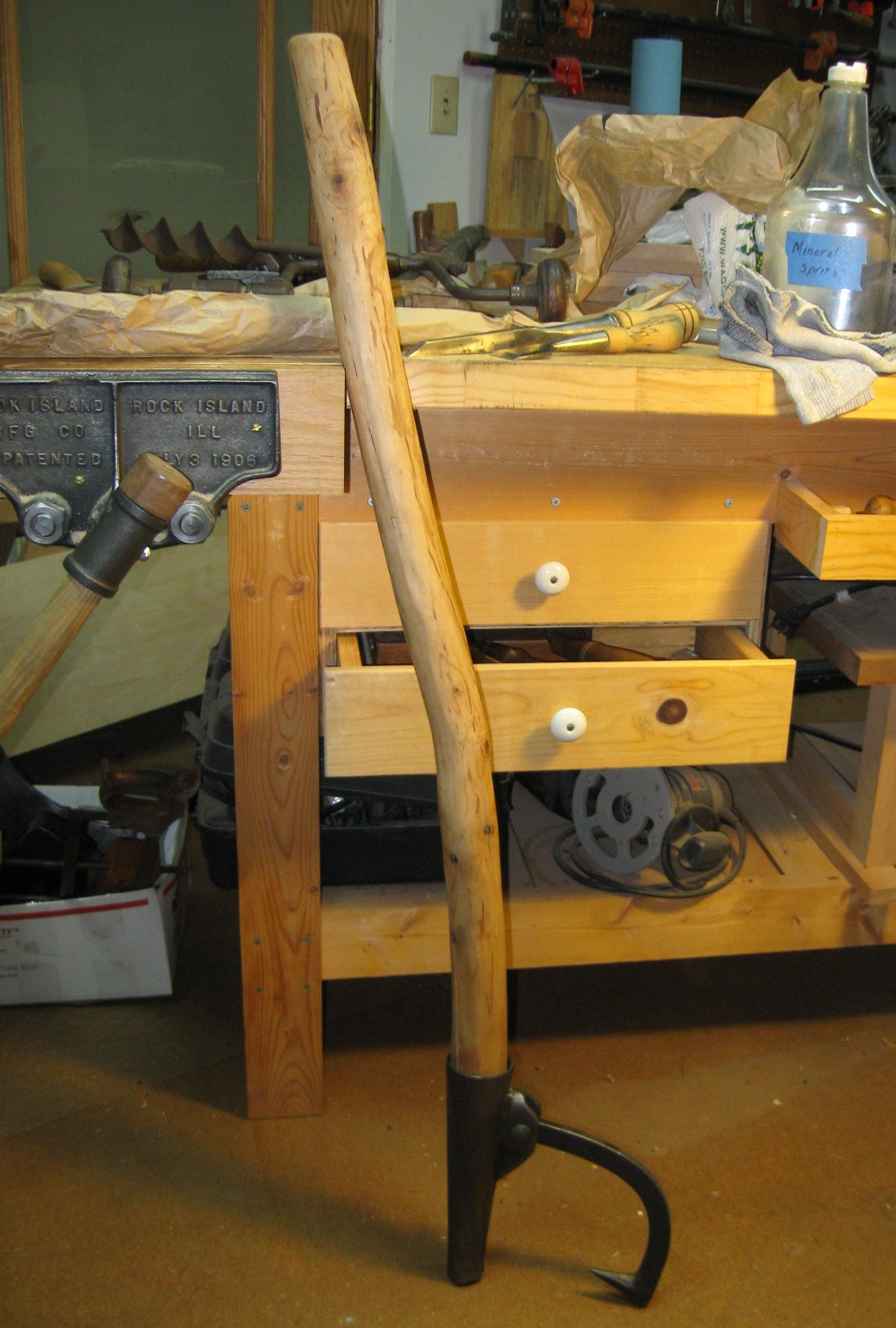I was looking at a photo of the temper line in a Plumb the other day. It showed a curve similar in shape to the bit. A few weeks ago we were trying to think of a way to get a curved quench line in a one piece steel axe (the surface of the liquid quenchant would be a flat plane). I think I might have the answer. Uneven transfer of heat back into the quenched zone. The thicker center of the axe holds more heat and it transfers further back into the bit removing temper.
It's a theory. I'd like to hear other blacksmith's thoughts on this.
Square_peg,i know that we all Know what we mean,but too often we do so throw terms about,it gets weird if one actually tries to Think it through...
So,HT consists of 2 parts-Quench,or Hardening;and Tempering,or Drawing temper,the follow up process to Draw down the hardness to the necessary level.
The Quench converts the structure into let's say(more or less )Martensite.OK?
Tempering subsequently dissolves some of Martensite back into Pearlite (or whatever,cementite+ferrite,here unimportant).
So IF(and i'm afraid i here challenge that) it is indeed the Martensitic structure that gives the edge of a given axe it's color contrast...Then lets forget about Tempering,as tempering only Subtracts from that,making that all Less.
Basque smith in the video does not do the Differential Quench,as you (and Phantomknives a few posts later)seem to imply-he does a Differential Heating.
So,his Quench-line would indeed follow the curve or whatever he Austenised by his whatever-shaped Heating.(the rest,the unheated portion would not convert to any other structure,so any contrast,however hypothetical,is out).
You're absolutely right in that the Tempering speed,and shape of it's running front,would be determined by the shape of the mass,but as above.Temper plays NO role here*
In Theory,one CAN do as you say-heat the entire mass,and Quench-differentially.It is done,by some,and does indeed leave a contrasting color differential.
But,again:It's the opposite,as the Martensitic structure would most likely appear whitish...(also,again,i say "probably","most likely" and other such oblique terms,as it doesn't do to challenge these issues with undue confidence...these are deep waters..).
I'd humbly propose a counter-experiment:On an axe with similar "temper-line" visually but perhaps not as dear to you...With a file,file off a few thou's worth under the blade,where the transition crosses from one side to another,(where it'd be least visible).
IF it is indeed a weld,on a freshly-filed surface you'll see it very plainly:The edge(higher C)alloy will appear mirror-Shiny,while the lower-C body would remain visibly duller.(that is the function of light refraction-the denser alloy files to a different texture,refracting light differently from the softer alloy).
* the man in the video does a so-called an Auto-,or a blacksmith's Temper,not something recommended to anyone with any less experience with a particular alloy+particular circumstances ,all of it remaining very steady over the years...
** agitating work in quenchant is not done by everyone.Personally,i NEVER agitate work in quench(and so don't many others).It is done,presumably,to dispell the possible vapor jacket,vapor,especially steam,being Very different from liquid,and Insulator in it's quality vs Conductor.(space between molecules ruins conductivity).
However,vapor is better to be taken care of by proper viscosity + temperature,and possibly surfactants for water...One's not fast enough to do an effective job by motion anyway.But,to each ...et c.

 IMG_20170816_121804
IMG_20170816_121804 IMG_20170816_121828
IMG_20170816_121828 Rolling
Rolling
